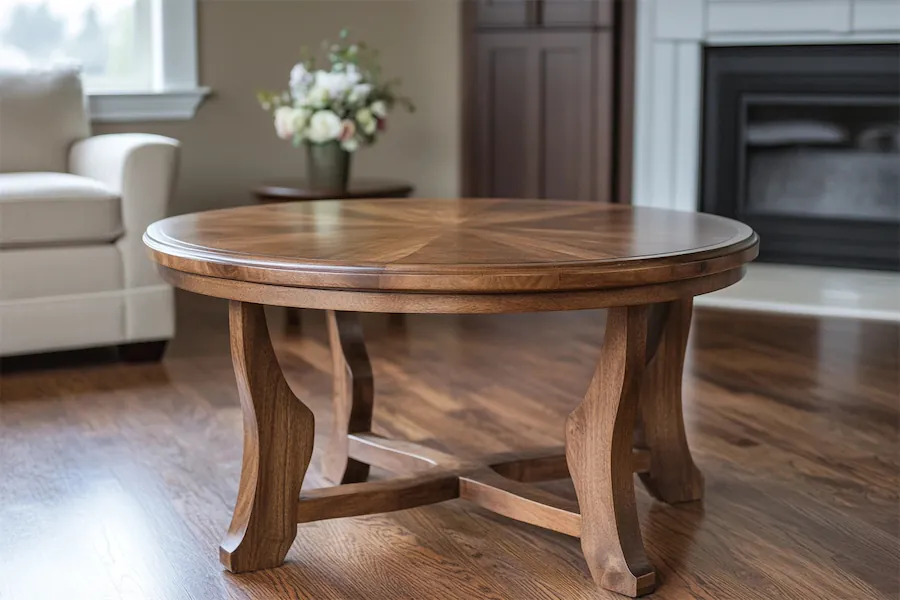A traditional coffee table is a low-standing piece of furniture designed to be placed in front of a sofa or seating area. It serves both functional and aesthetic purposes, providing a surface for beverages, books, decorative items, and more. Characterized by classic design elements, traditional coffee tables often feature ornate details, rich wood finishes, and timeless craftsmanship that complement various interior styles.
History and Origins of Traditional Coffee Tables
The concept of the coffee table emerged in Europe during the late Victorian era. The earliest tables specifically designed and referred to as coffee tables appeared in Britain. Notably, a table designed by E.W. Godwin in 1868, produced by manufacturers William Watt and Collinson and Lock, is considered one of the earliest examples. Initially, these tables were approximately twenty-seven inches high. Over time, the design evolved into lower tables, possibly influenced by the low tables used in Japanese culture or the tea gardens of the Ottoman Empire. By the late 19th century, coffee tables became a staple in living rooms, reflecting the social customs of leisure and hospitality.
Key Features of Traditional Coffee Tables
Traditional coffee tables are distinguished by several hallmark features:
- Materials: Predominantly crafted from rich woods such as mahogany, cherry, or oak, these tables exude warmth and durability. For instance, Laurel Crown Furniture offers traditional coffee tables made from solid 100% Honduran mahogany, known for its reliability and ease of craftsmanship.
- Design Elements: Ornate carvings, turned legs, and intricate moldings are common, showcasing skilled craftsmanship and attention to detail. These elements contribute to the timeless appeal of traditional designs.
- Finishes: Polished to a high sheen, traditional coffee tables often feature deep stains that highlight the natural grain of the wood, adding to their elegance.
- Shapes: While rectangular shapes are prevalent, traditional coffee tables also come in oval, round, and square forms to suit different spatial arrangements. Retailers like Wayfair offer a variety of shapes and sizes to accommodate diverse preferences.
Applications of Traditional Coffee Tables
Beyond serving as a surface for drinks and decorative items, traditional coffee tables anchor the living room’s design, creating a focal point that ties together seating arrangements. They can also provide additional storage through built-in drawers or lower shelves, enhancing their functionality. For example, Countryside Amish Furniture offers solid wood coffee tables with features like lift-tops and storage compartments, catering to both aesthetic and practical needs.
Considerations When Choosing a Traditional Coffee Table
When selecting a traditional coffee table, consider the following factors:
- Size and Proportion: Ensure the table’s dimensions are appropriate for your seating area, allowing for comfortable movement around it.
- Material Quality: Opt for tables made from solid wood for longevity and a premium feel. High-quality materials not only enhance durability but also contribute to the table’s overall aesthetic.
- Design Compatibility: Choose a design that complements your existing décor, paying attention to details like leg style, carvings, and finish. Retailers such as Ethan Allen offer a range of traditional coffee tables that can seamlessly integrate with various interior styles.
- Functionality: Consider additional features like storage options or lift-tops if you require extra space or versatility. Functional elements can enhance the usability of the coffee table in daily living.
Conclusion
Traditional coffee tables remain a beloved choice for homeowners seeking to infuse their living spaces with classic elegance and functionality. By understanding their historical context, key features, and practical applications, you can select a piece that not only enhances your home’s aesthetic but also serves your lifestyle needs.
